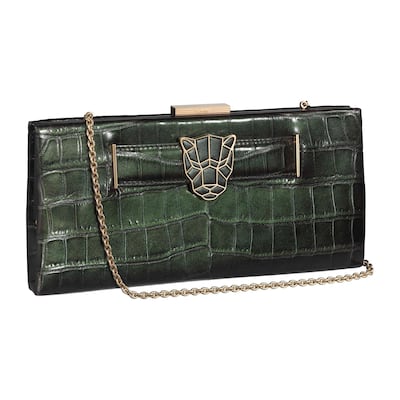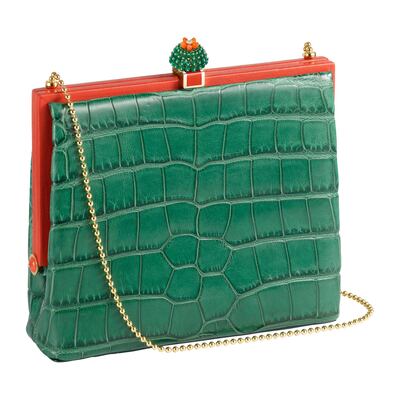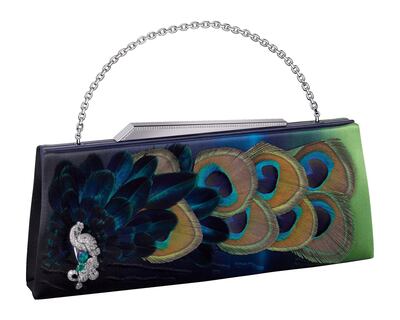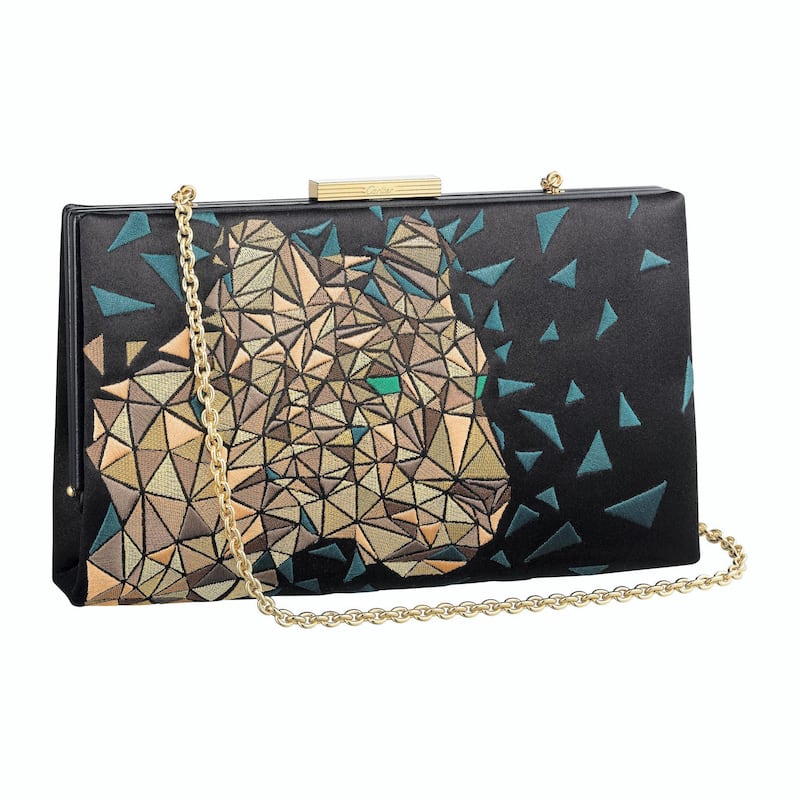The Cartier panther first reared its elegant head in the early 20th century, and at the time mainly featured in the brand's high-jewellery collections. The motif, in its myriad forms, from watches and jewels to perfume bottles and handbags, has since been adopted – and adored – by generations of women.
In November, Cartier created two new versions of its Panthère de Cartier bag. The first gives a festive spin to last year’s classic twin rectangular clutches, which came in either black calfskin or crocodile skin, and were decorated with a gold-outlined panther head and an engraved clasp. The new edit places the hypnotic motif and gold-finished clasp against an iridescent green crocodile skin, with a green lambskin interior.

The second iteration (main image above), presents the panther – emerald eyes and all – in pixelated form. The embroidered artwork sits sleek against a satin exterior, while the interior is in peacock blue lambskin.
The clutches are but two additions to a long line of Cartier handbags that double as jewels. The first known example dates back to 1906, when the brand created a chainmail evening purse, with an owl’s head clasp crafted from rose-cut diamonds and emerald cabochons. This was followed by the Tutti Frutti bag, with diamonds, rubies, emeralds and sapphires; and a cylindrical vanity case in gold, platinum, enamel and diamonds that was sold to the Duke of Windsor, who apparently offered it to Coco Chanel in 1924.
Jeanne Toussaint, muse to Louis Cartier and director of jewellery from 1933 to 1978, dramatically influenced the label's designs. She is credited for reimagining the panther in its entirety, as well as for articulating Cartier's other famous animals, birds and flowers. It was during Toussaint's reign that Mexican actress María Félix acquired a reindeer leather bag trimmed in onyx, with coral and diamond-set chimera heads; and Barbara Hutton ordered a bag with a gem-encrusted tiger clasp to gift to her sister-in-law, Princess Nina Mdivani.
More recently, Cartier looked to the specialist maisons that it has collaborated with over the years, as well as its Cactus jewellery line, and reinterpreted these crafts and symbols as covetable arm candy. In September, for instance, the brand released three Cactus de Cartier bags, in green, tan and terracotta alligator skin, each topped with a succulent brooch clasp decorated with the cactus motif.

Much like its jewellery form, the rebel flower on these shoulder bags came in emeralds, carnelians and diamonds.In the same month, Cartier unveiled its Snake bag, which features beadwork in gold and onyx by France's Maison Lesage, the embroidery house that designers such as Chanel, Cristóbal Balenciaga and Christian Dior have long turned to for their needlework needs. Cartier also collaborated with Maison Lognon for its Crocodile bag, which features a flap with the pleated work that the house is known for; and with feather-maker Maison Lemarié for its Peacock and Lovebirds evening bags.

The styles and symbols may have evolved since that first coiffed owl’s head, but Cartier’s bejewelled bags continue to shine.












